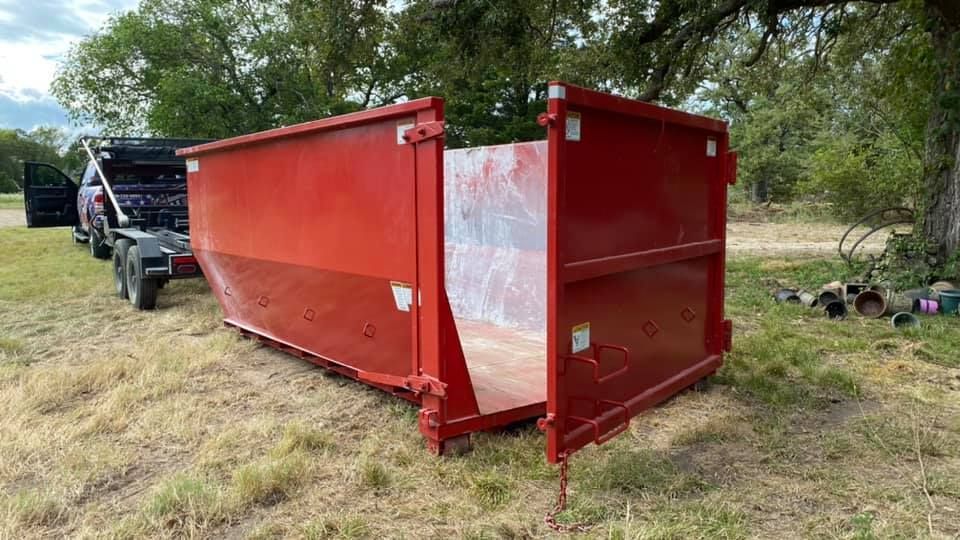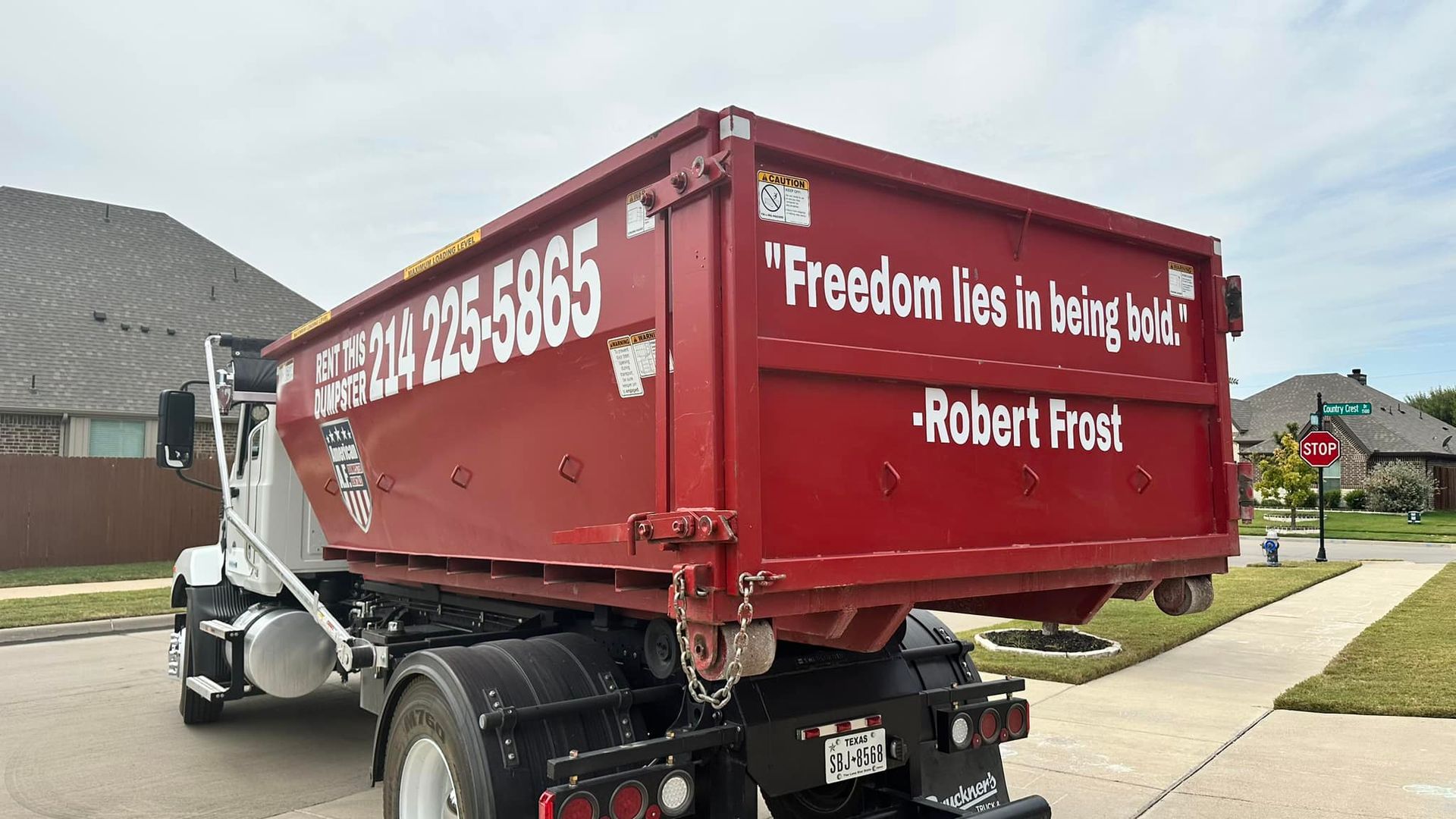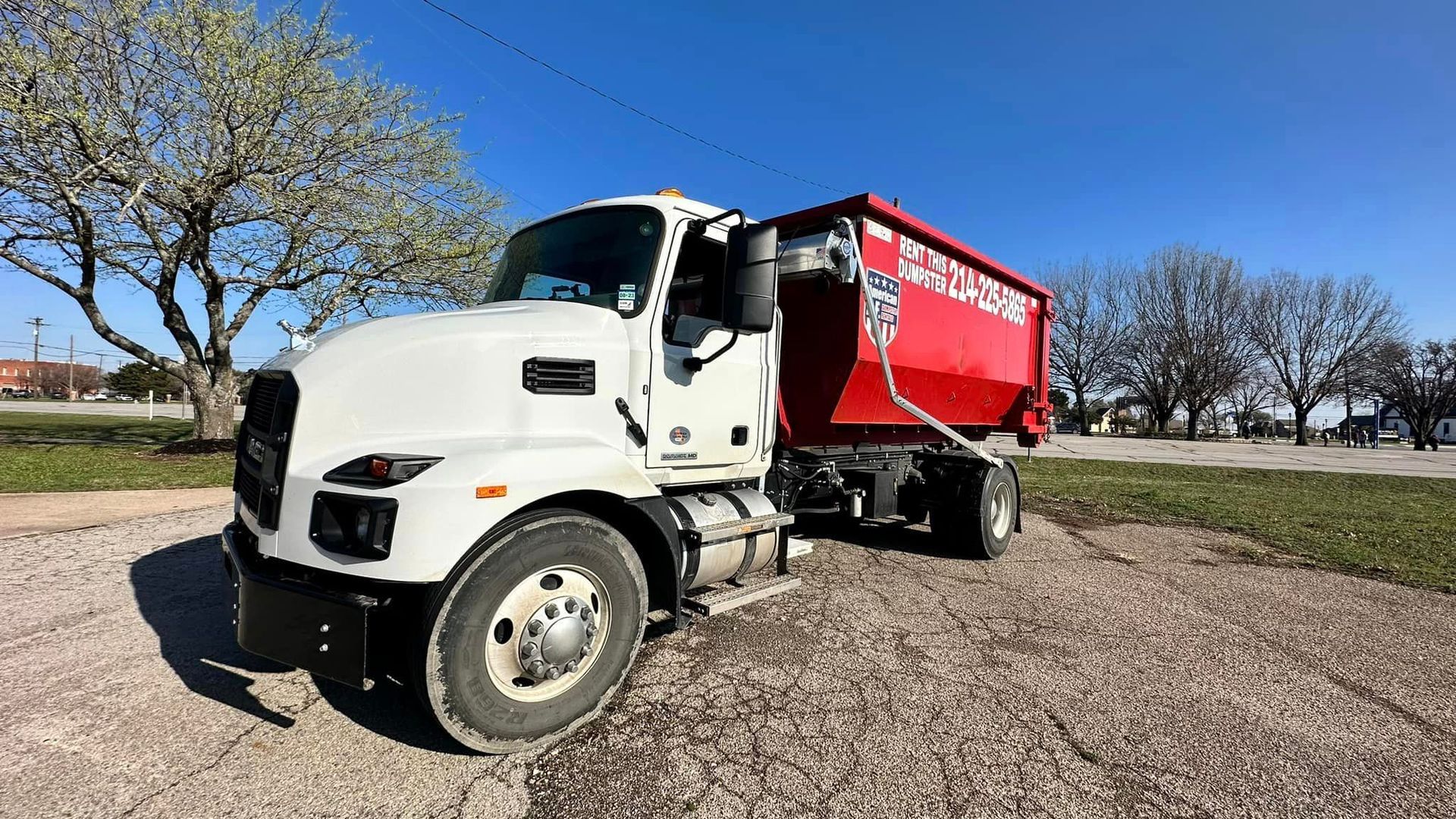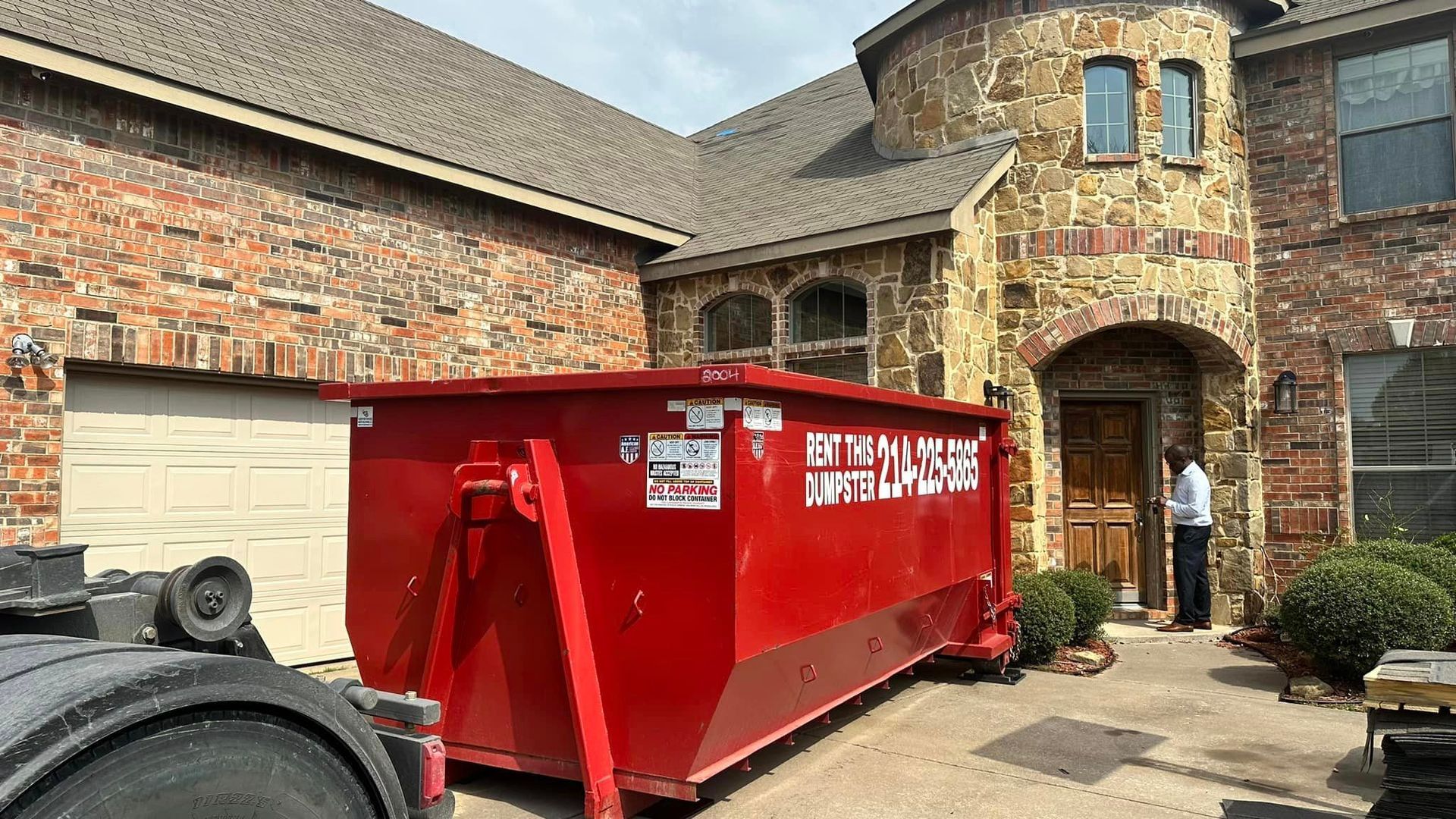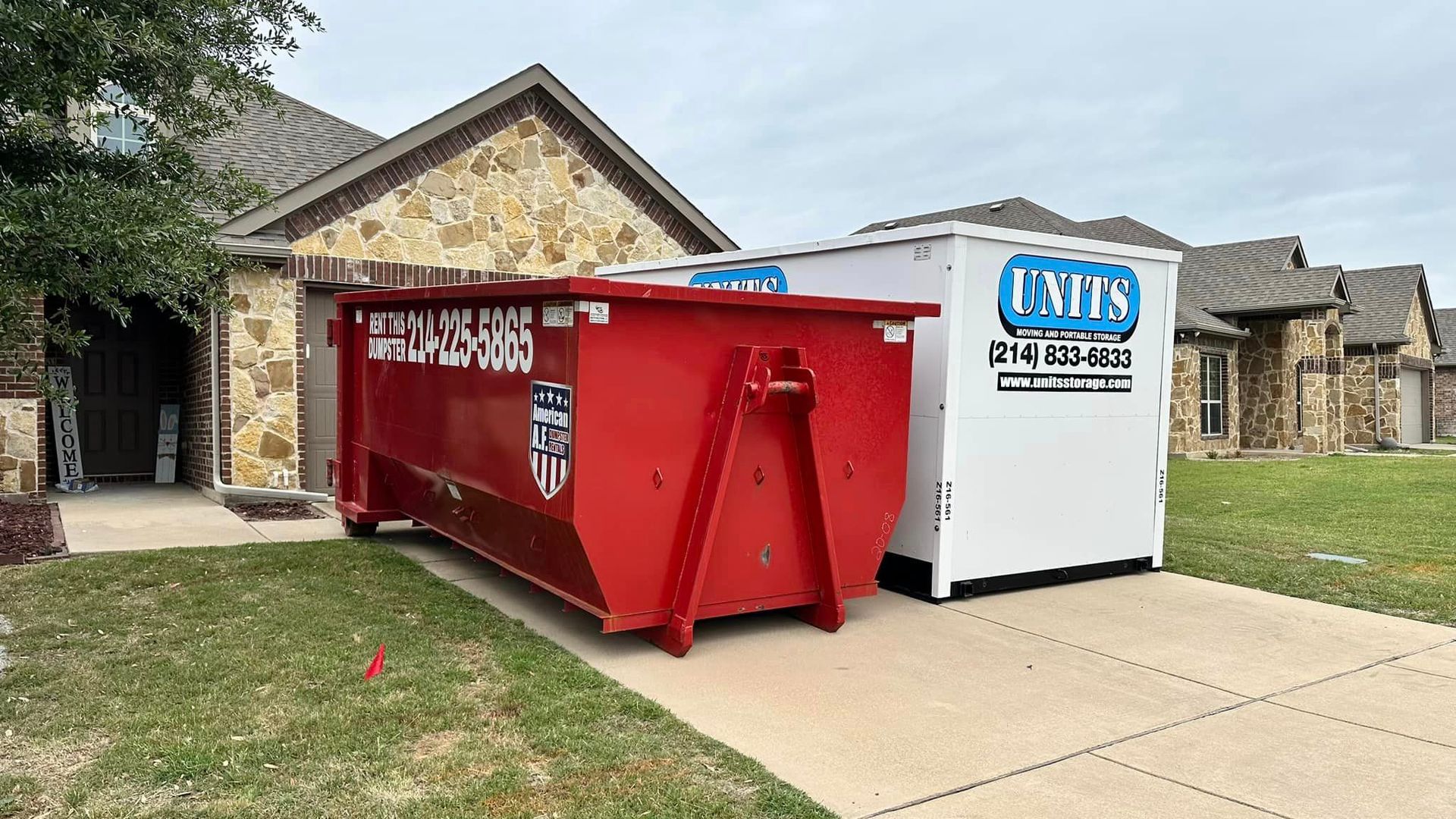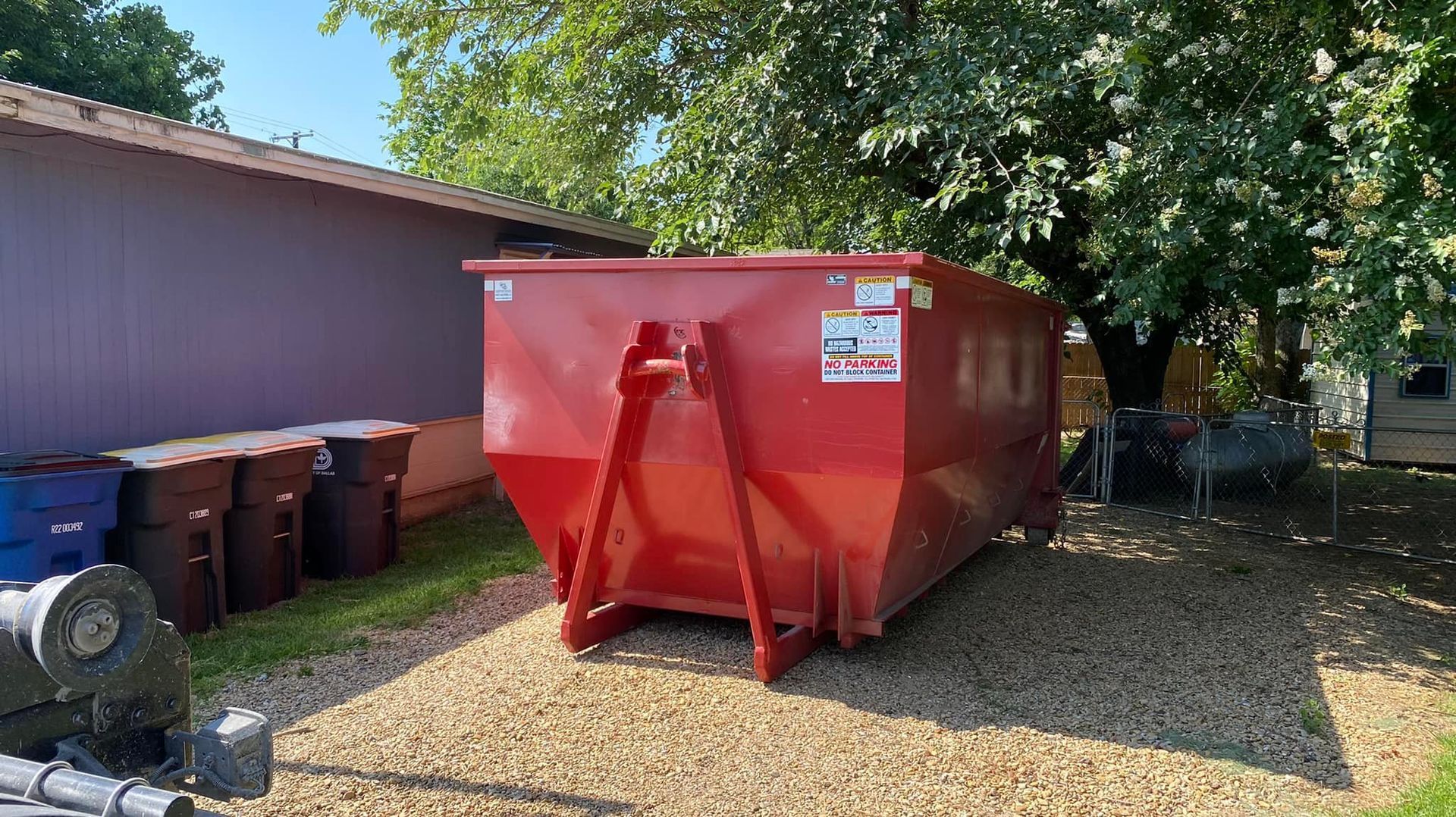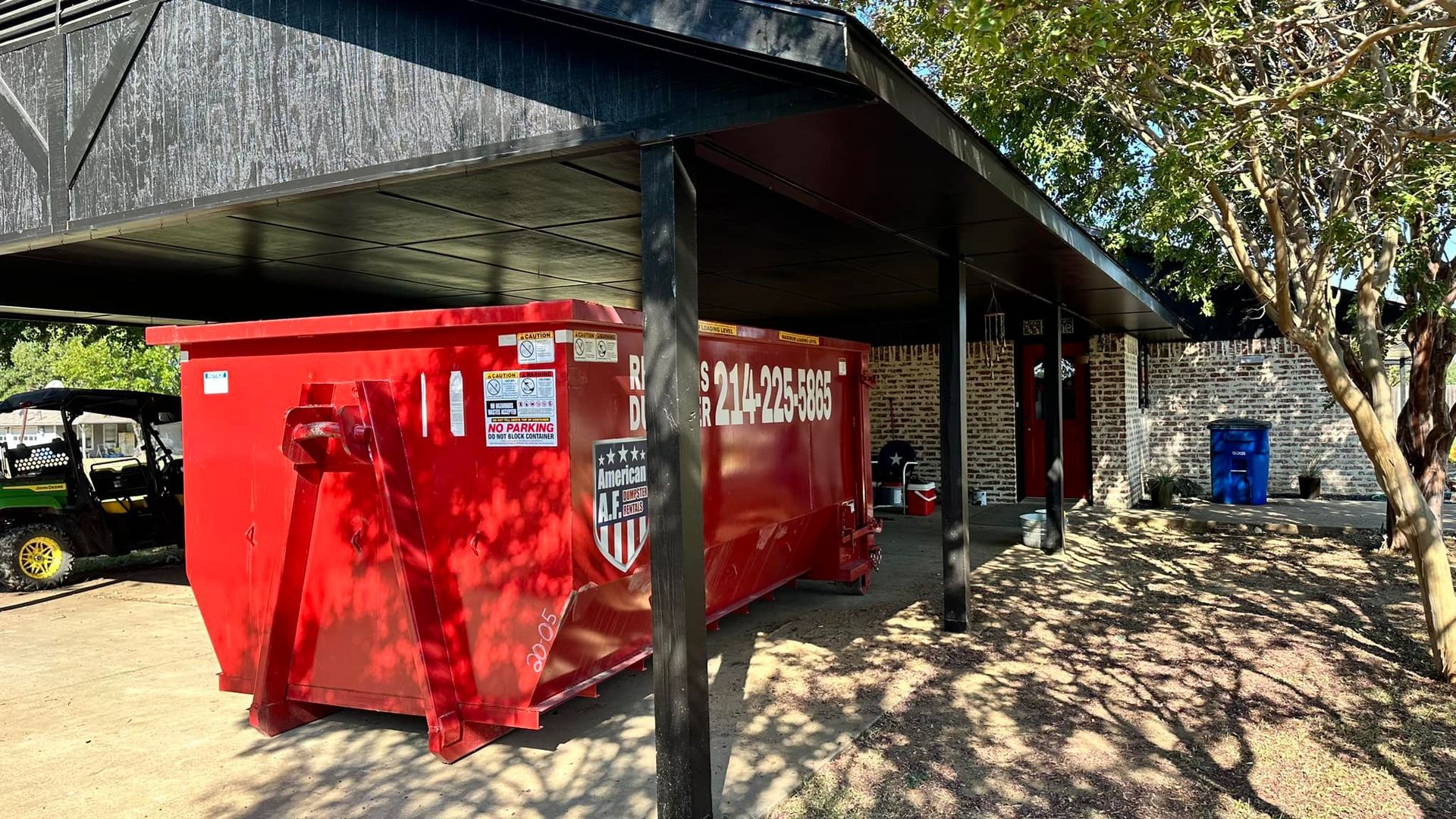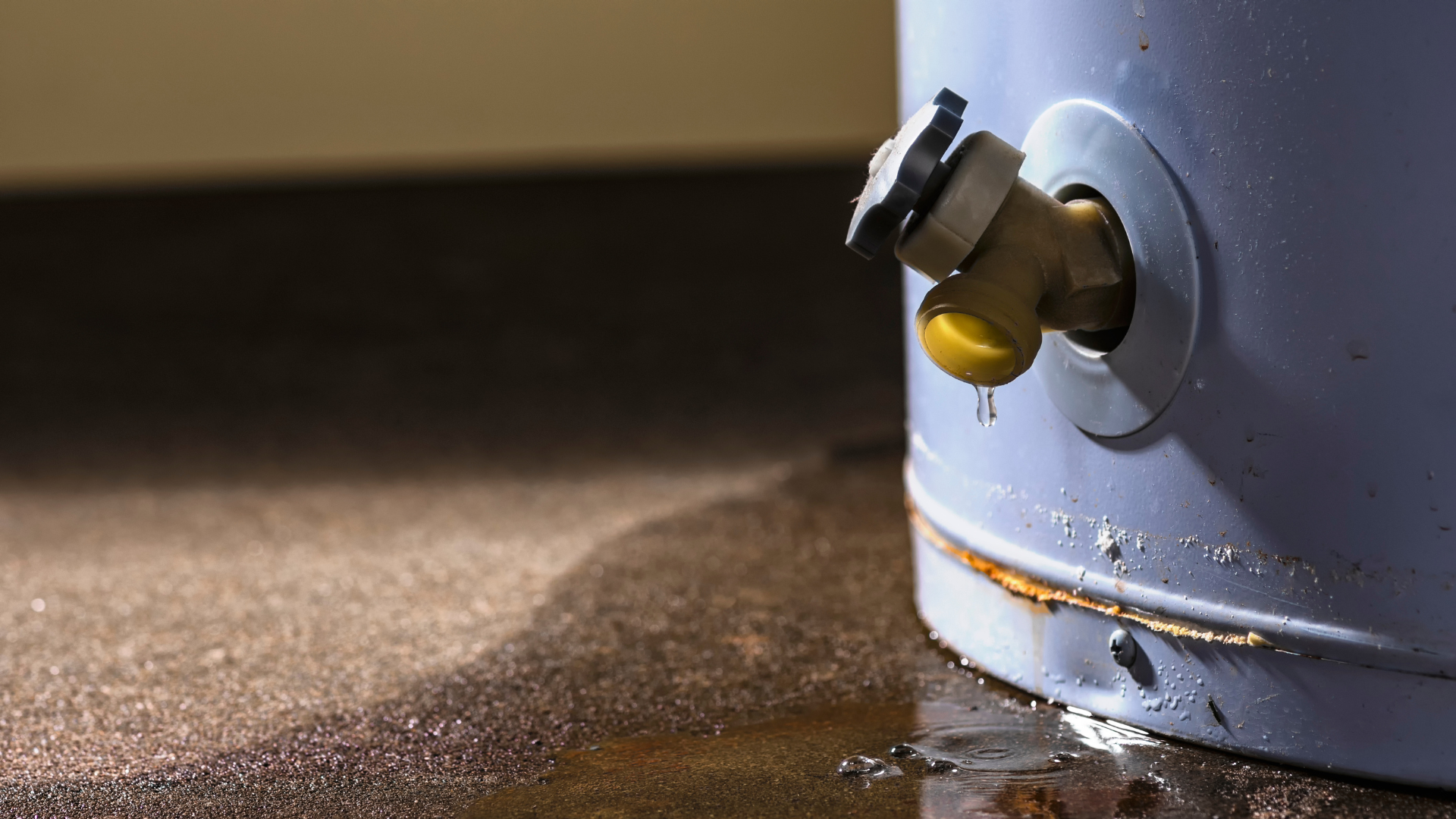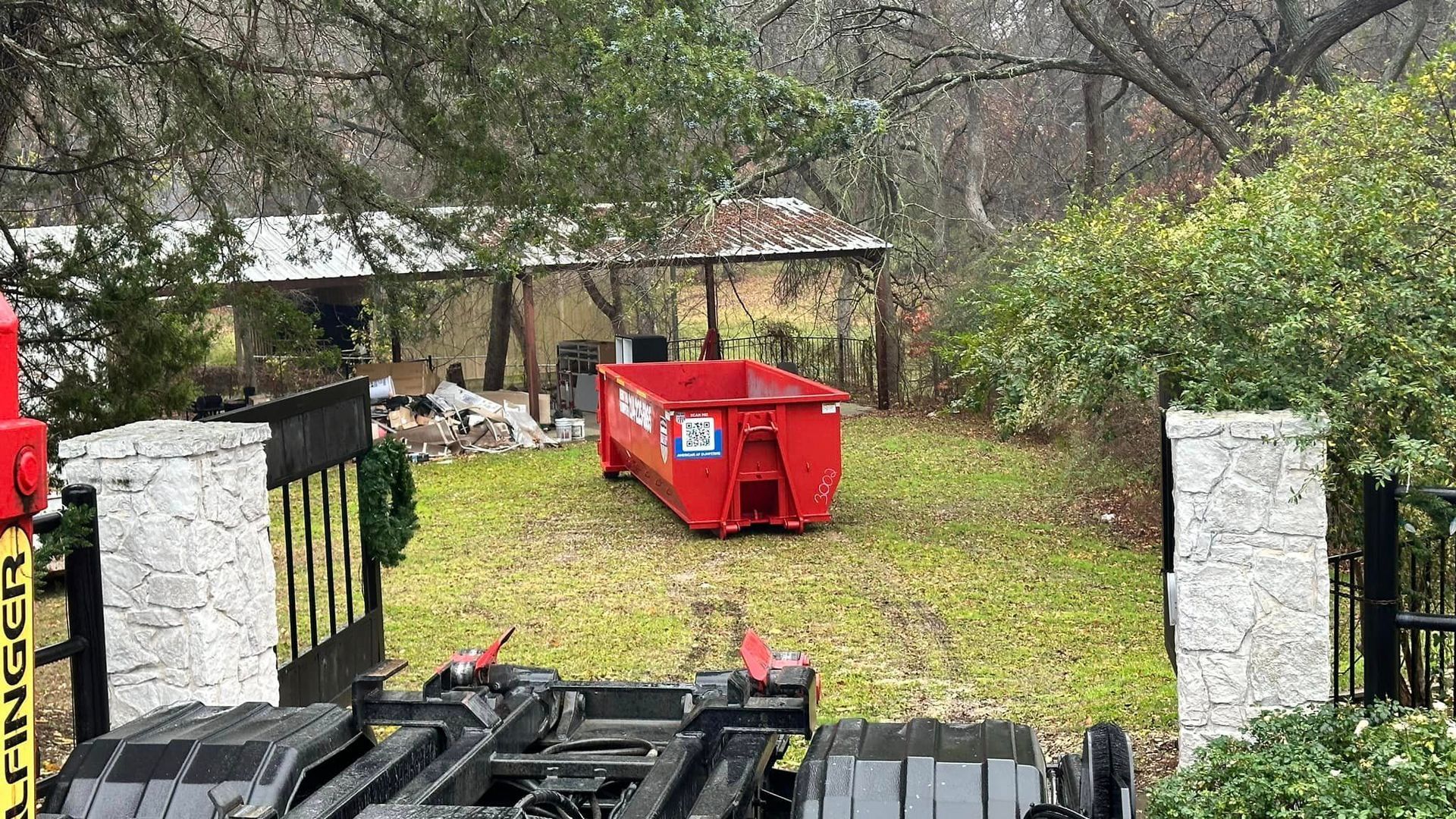How To Clean Dumpster in 2024
How To Clean Dumpster in 2024 - Step by Step Guide
Tools to Clean a Dumpster
Cleaning a dumpster is not just a dirty task, but it can be challenging without the proper equipment. To ensure a thorough and efficient cleaning process, here is a list of essential tools and materials you should have on hand:
- Protective Gloves:
Vital for protecting your hands from dirt, bacteria, and potential sharp objects.
- High-Pressure Surface Cleaner:
Effective for removing grime and debris from the dumpster's surfaces.
- Degreasing Soap:
Specifically designed to cut through grease and oil, making it ideal for dumpsters used in food-related industries.
- Sturdy Trash Bags:
Necessary for disposing of any residual waste found during the cleaning.
- Pressure Washer:
An indispensable tool for tough cleaning jobs, capable of blasting away stubborn dirt and stains.
- Chemical Cleaning Agents:
These are necessary for deep cleaning, especially in cases of severe grime and bacterial growth.
- Specialized Cleaning Solutions:
For commercial dumpsters, particularly those used in food waste disposal, it's advisable to use cleaning solutions that are formulated to tackle grease spills and control bacterial growth effectively.
With these tools at your proper disposal, you can tackle any dumpster cleaning task, ensuring a hygienic and clean environment.
For tips on how to keep yourself safe with the proper cleaning equipment and strategies, do yourself a favor and read ‘3 Top Types of Safety Gear & Strategies for Cleaning Pros.'
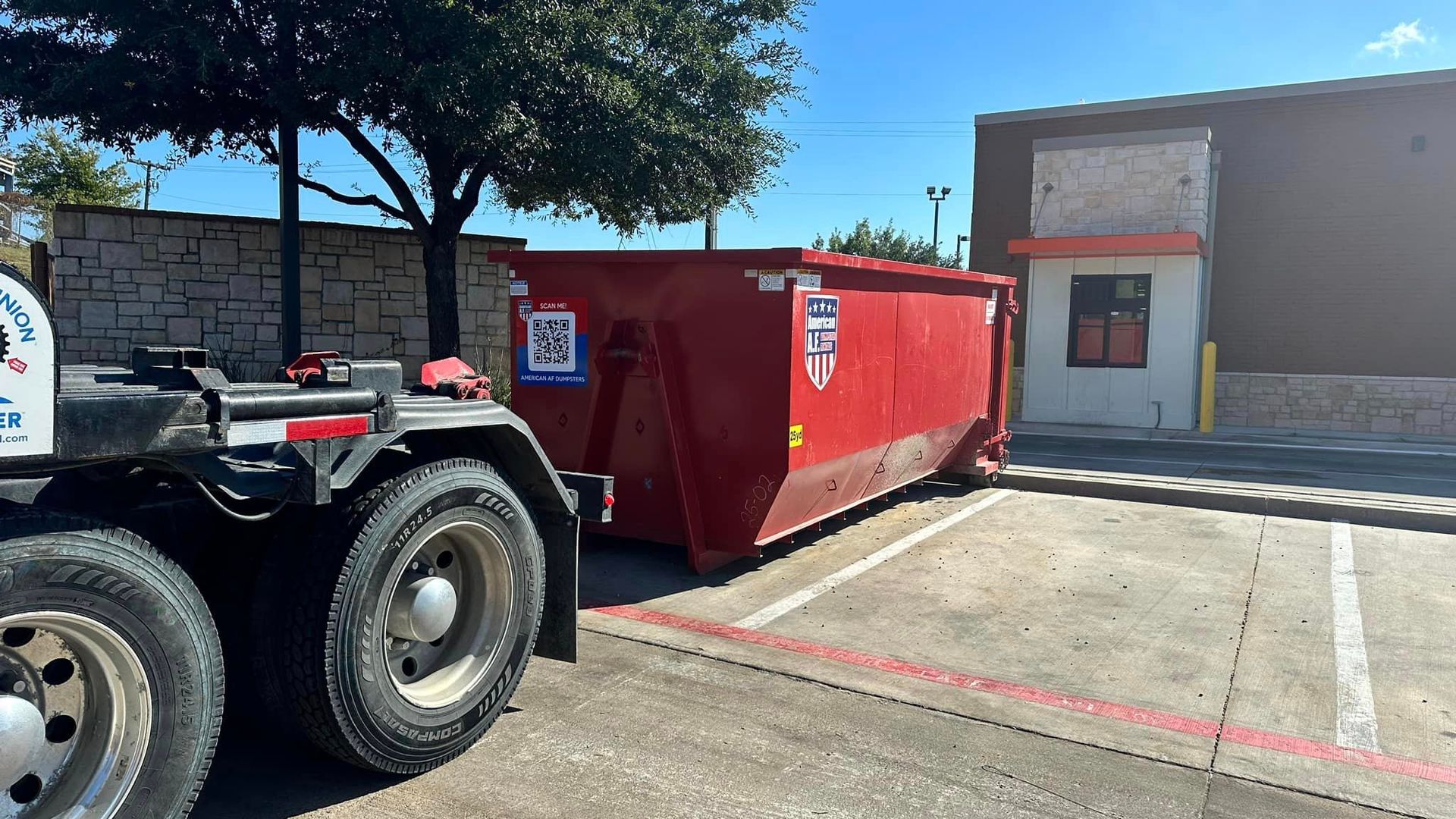
NEED A DUMPSTER?
Steps to Clean a Dumpster
Cleaning dumpsters, particularly in commercial settings, requires a detailed and systematic approach to ensure hygiene and safety. Here's an expanded step-by-step guide to effectively clean a dumpster:
- Preparation and Safety Measures:
Before starting, equip yourself with protective gear such as gloves, goggles, and a mask to safeguard against harmful bacteria and debris.
- Remove Debris and Waste:
For the next step, thoroughly clear the area around the dumpster. This includes emptying all trash bins and roll-off dumpsters. Be vigilant for any hazardous materials or sharp objects.
- Sweeping and Pre-Rinsing:
Sweep the area around the dumpster to remove loose dirt and debris. Pre-rinse the dumpster's interior and exterior with a hose to remove surface dirt, making the cleaning process more effective.
- Applying Cleaning Solution:
Prepare a mixture of bleach or a commercial-grade cleaning solution. Apply it generously inside the dumpster and on the surrounding pad. This step helps break down grease, grime, and bacteria.
- Scrubbing:
For areas with stubborn stains, use a long-handled scrub brush to agitate the surfaces. This helps in lifting off tough grime and stains.
- Pressure Washing:
Utilize a pressure washer to thoroughly clean the interior and exterior of the dumpster, focusing on areas with tough stains and grease spots. The high pressure ensures deep cleaning and removal of embedded dirt.
- Rinsing and Disinfecting:
After pressure washing, rinse the dumpster and area with clean water. Follow up with a disinfectant spray to eliminate any remaining bacteria or viruses, ensuring a sanitary environment.
- Drying and Deodorizing:
Allow the dumpster and the area to dry completely. Optionally, apply a deodorizer to mitigate any lingering odors and maintain a fresh environment.
- Waste Disposal and Cleanup:
Properly dispose of the collected waste and cleaning residues in accordance with local regulations. Ensure all tools and equipment used are cleaned and stored properly.
- Regular Maintenance:
Establish a routine cleaning schedule for the dumpster to prevent the buildup of waste and bacteria, maintaining a consistently clean and hygienic area.
By following these comprehensive steps, you can effectively clean and maintain dumpsters, ensuring a safe and pleasant environment for both workers and visitors.
For more helpful tips on how to clean a dumpster, check out this great resource ‘How To Clean A Dumpster’.
What Needs Regular Cleaning in a Dumpster?
To maintain hygiene and prolong the lifespan of your dumpster, it’s important to focus on regular maintenance. This involves cleaning several key areas:
- Interior Surfaces of the Dumpster:
This area is prone to bacterial growth and unpleasant odors due to constant exposure to waste. Regular cleaning of the interior surfaces is essential to prevent health and safety hazards and to keep the dumpster hygienic.
- Exterior Surfaces of the Dumpster:
These surfaces can accumulate dirt and debris over time. Cleaning the exterior not only maintains its appearance but also ensures that it remains in good condition.
- Dumpster Pad Area:
The area around the dumpster, especially near trash cans and roll-off dumpsters, requires frequent cleaning. This is crucial to prevent grease buildup, which can be slippery and dangerous, and to maintain the integrity of the dumpster pad.
- Surrounding Areas:
It’s also important to clean the area surrounding the dumpster. This includes sweeping for debris and washing down any spills or stains to prevent attracting pests and to maintain a clean environment.
Regular cleaning of these areas helps in preventing health issues, keeping the dumpster functional, and maintaining a clean and safe environment for everyone.
Methods for Cleaning a Dumpster
Cleaning a dumpster pad effectively can be achieved through various methods, each suited to different levels of grime and types of stains. Here are some detailed approaches:
Soft Washing Technique:
- Description:
This method involves using lower water temperatures and less aggressive chemicals. It's ideal for regular maintenance cleaning and for surfaces that might be damaged by high pressure.
- Process:
Apply a cleaning solution that gently loosens dirt and grime. Then, use a low-pressure rinse to wash away the debris, ensuring that the surface isn't eroded.
- Benefits:
It's safe for more delicate surfaces and reduces the risk of damaging the dumpster or the pad. Also, it's environmentally friendly due to the mild nature of the chemicals used.
High-Pressure Dumpster Pad Power Washing:
- Description:
This method uses high-pressure water, often heated, to blast away tough stains and deep-seated grime. It's more aggressive and effective for heavily soiled areas.
- Process:
A high-pressure washer, often with hot water, is used to penetrate and remove stubborn stains, grease, and dirt buildup. The pressure can be adjusted depending on the toughness of the stains and the durability of the cleaning surface.
- Benefits:
High-pressure washing is extremely effective for deep cleaning, especially in areas with heavy grease and grime buildup. The use of hot water enhances its cleaning power, making it ideal for commercial and industrial dumpster pads.
Hybrid Approach:
- Description:
In some cases, a combination of both techniques can be used.
- Process:
Start with a soft wash to gently loosen the surface dirt and then follow up with targeted high-pressure washing for tougher stains. This approach ensures a comprehensive clean without causing damage.
- Benefits:
Combining both methods allows for a thorough clean while minimizing the risk of damage to the dumpster and the surrounding area. It's especially useful for dumpsters with a mix of sensitive and robust surfaces.
Choosing the right method depends on the dumpster's condition, the type of waste it typically holds, and the material of the dumpster and pad. Regular assessment and cleaning using these methods can significantly prolong the life of a dumpster and maintain a hygienic environment.
How to Keep the Dumpster Clean
Alongside the cleaning methods, there are several proactive steps you can take to maintain the cleanliness of your dumpster over time.
Get the Right Trash Bags
- Quality:
Choosing high-quality, heavy-duty trash bags is crucial. These bags are less prone to tearing and leaking, which helps in containing waste effectively.
- Suitability for Waste Type:
For commercial businesses, especially those dealing with food waste, it’s important to select bags that are designed to handle organic waste without breaking down or leaking.
- Size and Fit:
Ensure the bags fit the dumpster properly. Oversized bags may drag on the ground and get punctured, while undersized bags might not hold all the waste securely.
Keep the Dumpster Dry
- Regular Maintenance:
Conduct routine checks to ensure the dumpster area, particularly the concrete pad, remains dry. Address any standing water or leaks immediately.
- Drainage:
Ensure adequate drainage around the dumpster area to prevent water accumulation.
- Quick Response to Spills:
React swiftly to any spills inside the dumpster. Absorbent materials can be used to soak up liquids, followed by a thorough cleaning to prevent odor and bacterial growth.
Keep Animals Out
- Secure Lids:
Always keep the dumpster lids closed and securely fastened. This not only prevents animals from getting into the trash but also reduces odors that may attract them.
- Fencing or Enclosures:
Consider installing fences or enclosures around dumpsters in areas prone to animal intrusions.
- Regular Inspection and Repair:
Regularly inspect the dumpster for any signs of damage or gaps that animals could exploit. Promptly repair any damages to lids or sides of the dumpster.
These additional steps contribute significantly to keeping your dumpster clean and hygienic, reducing the frequency and intensity of deep cleaning required, and ensuring a more pleasant environment for everyone involved.
Why Pressure Washing Stands Out
In the realm of dumpster pad cleaning, pressure washing services emerge as a highly effective method, especially for challenging cleaning tasks. Here's why it's often the preferred choice:
- Deep Cleaning Capability:
Pressure washing can penetrate and remove tough stains, grease spills, and even rust with the help of a rust remover. The high-pressure water stream is an effective way of breaking down and washing away deeply ingrained dirt and grime.
- Expertise and Precision:
A professional pressure washing company, backed by years of experience, knows precisely how to balance the use of cleaning agents and water temperatures. This expertise ensures that the cleaning is not only effective but also safe for the surfaces being cleaned.
- Efficiency:
Pressure washing is a quick method to clean large areas, making it ideal for commercial dumpster pads. This efficiency saves significant time compared to manual scrubbing or less powerful cleaning methods.
- Customized Solutions:
Professionals in pressure washing can adjust their techniques to suit different types of stains and surfaces. Whether it's adjusting the pressure, changing the water temps, or choosing specific cleaning agents, they can tailor their approach to achieve optimal results.
- Preventive Care:
Regular pressure washing can prevent the buildup of grime and rust, thereby extending the lifespan of the dumpster pad. This preventive maintenance is crucial for keeping the area in good condition over time.
- Convenience for Business Owners:
For businesses, outsourcing this task to a professional service means less time and effort spent on maintenance. It ensures a consistently clean and safe dumpster area without diverting resources from the business's core operations.
Overall, pressure washing stands out for its effectiveness, efficiency, and the value it brings in maintaining a clean and hygienic dumpster area, making it a go-to choice for many business owners.
For a full breakdown on how to pressure wash your dumpster pad, please read ‘Dumpster Pad Power Washing & Cleaning – What to Know’.
Optimizing Dumpster Maintenance for Commercial Properties
Commercial properties, especially those with high foot traffic like construction sites and parking lots, need to prioritize the regular maintenance of their dumpster areas. Ensuring a clean dumpster pad not only enhances customer satisfaction but also prevents the site from becoming a potential hazard.
Important Considerations for Dumpster Maintenance
- Proper Disposal Practices:
Proper disposal of waste, especially hazardous waste, is crucial. This involves selecting the right dumpster rentals and ensuring that trash bags are adequately sealed and disposed of in the designated areas.
- Expert Cleaning Services for Commercial Properties:
Utilizing expert cleaning services, like commercial power washing services, is an effective way to maintain the entire area. These professionals can efficiently handle grease spills and other stubborn stains, ensuring the desired result without wasting time.
Safety and Hygiene: Key Aspects of Dumpster Cleaning
The safety and hygiene of a dumpster pad are paramount, particularly for property managers responsible for the upkeep of commercial property. Regular cleaning of the dumpster pad is not just a good idea; it’s a necessity to prevent the area from becoming a breeding ground for bacteria and other health risks.
Steps to Ensure a Clean and Safe Dumpster Pad
- Routine Cleaning on a Regular Basis:
Consistent cleaning of the entire dumpster pad and the interior of the dumpster is essential. This includes addressing any grease spills promptly and using appropriate cleaning solutions.
- Addressing Potential Hazards:
It's important to be aware of potential hazards like hazardous waste or slippery areas due to grease spills. Regular inspection and cleaning can mitigate these risks.
- Professional Dumpster Pad Cleaning Services:
Hiring professional dumpster pad cleaning services can significantly improve the lifespan of your dumpster pad. These services offer tailored cleaning solutions, ensuring a clean and hygienic environment.
By following these best practices and prioritizing regular maintenance, commercial property managers can ensure a clean, efficient, and safe dumpster area for their properties in 2024 and beyond.
For additional tips and information on cleaning a dumpster pad, watch this video called ‘How To Power Wash a Restaurant Dumpster Pad From Beginning to End’.
FAQS
-
What is the Best Way to Clean Dumpsters?
The best way to clean dumpsters involves a combination of methods. Start with removing debris and pre-rinsing, then apply a degreasing cleaning solution, especially for dumpsters with food waste. Use a pressure washer for a deep clean and finish by rinsing, disinfecting, and deodorizing. For tougher stains, a blend of soft washing and high-pressure washing can be particularly effective.
-
Should You Sanitize a Dumpster?
Yes, you should sanitize a dumpster. Regular sanitization is crucial to eliminate bacteria and reduce health risks. After cleaning, apply a disinfectant to the interior and exterior of the dumpster to ensure it is thoroughly sanitized.
-
Do Dumpster Pads Need to Be Cleaned?
Absolutely, dumpster pads need to be cleaned. Regular cleaning of the dumpster pad prevents grease buildup, eliminates odors, and reduces the risk of slips and falls. It also extends the lifespan of the pad and maintains the overall hygiene of the area.
-
How Often Should Dumpsters Be Cleaned?
Dumpsters should be cleaned on a regular basis, depending on usage. For commercial properties and high-traffic areas, it’s recommended to clean dumpsters at least once a month. In cases of heavy use or in warmer climates, more frequent cleaning may be necessary to prevent odor and pest attraction.
-
How Do You Keep Dumpsters from Smelling?
To keep dumpsters from smelling, implement regular cleaning and sanitization. Use deodorizing agents after cleaning to mitigate odors. Additionally, ensure proper disposal of waste in sealed bags and avoid overloading the dumpster. Regularly cleaning the area around the dumpster also helps in controlling odors.
Key Takeaways For ‘How To Clean Dumpster in 2024 - Best Practices’
- Essential Tools for Effective Cleaning:
Protective gloves, high-pressure surface cleaner, degreasing soap, sturdy trash bags, pressure washer, chemical cleaning agents, and specialized cleaning solutions are fundamental to tackle dumpster cleaning tasks efficiently.
- Step-by-Step Cleaning Guide:
Start with safety measures and debris removal, followed by sweeping, pre-rinsing, applying cleaning solution, scrubbing, pressure washing, rinsing and disinfecting, drying, and deodorizing. Conclude with waste disposal and regular maintenance for optimal results.
- Regular Maintenance Areas:
Pay attention to the interior and exterior surfaces of the dumpster, the dumpster’s entire pad area, and surrounding spaces to prevent health issues, bad smells, and maintain functionality.
- Cleaning Methods:
Choose between soft washing for delicate surfaces and regular maintenance, and high-pressure power washing for deeper cleaning of tough stains and grease. A hybrid approach can be tailored for different situations.
- Proactive Steps for Cleanliness:
Utilize the right trash bags, keep the dumpster dry, and secure it to prevent animal access. These measures contribute to maintaining a hygienic and pleasant environment.
- Advantages of Pressure Washing:
This method stands out for its deep cleaning capability, efficiency, and the professional expertise it offers. It's especially effective for commercial dumpster pads and offers preventive care benefits.
This comprehensive guide covers everything from the essential tools required for cleaning dumpsters to the best methods and maintenance practices. By following these guidelines, you can ensure a clean, safe, and hygienic dumpster area.

Powered by MagnateProSEO
All Rights Reserved | American AF Dumpsters

